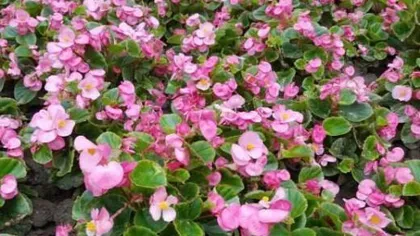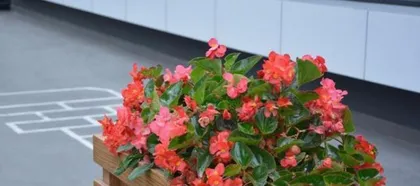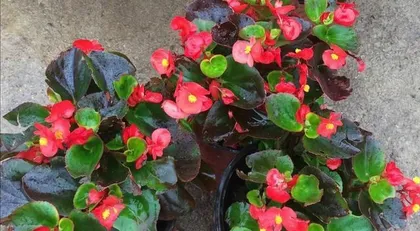Begonias: Beautiful Water-Loving Plants

Begonias are extremely beautiful plants, highly valued in garden design and courtyard decoration. However, many people are not aware of this plant's water-loving characteristics and care techniques. This article will start from the ecological characteristics of begonias to introduce its love for water and how to care for it scientifically.
I. Understanding the Growing Environment of Begonias
Begonias are plants that prefer a warm and humid climate, suitable for growing in environments with high temperatures and high humidity. They also like moist soil and require plenty of sunlight.

II. Water-Loving Characteristics of Begonias
Begonias are water-loving plants that need to maintain a certain level of moisture throughout their entire growth cycle. However, overwatering can lead to root hypoxia, so it is necessary to control the amount of water.
III. How to Water Scientifically
When watering, avoid direct watering on the roots. Instead, spray a mist or water through the bottom holes of the pot to distribute the moisture evenly throughout the soil.
IV. Fertilizer Requirements for Begonias
Begonias require a large amount of nutrients during their growth period, so it is necessary to add appropriate amounts of fertilizer in a timely manner. However, excessive fertilization can lead to the breeding of pests and diseases, so the amount of fertilizer should be controlled.

V. How to Fertilize Scientifically
Fertilizer should be evenly spread around the plant and the topsoil should be lightly raked to allow the fertilizer to penetrate deep into the soil.
VI. Pruning Methods for Begonias
Begonias are suitable for pruning in spring and autumn. Spring pruning can promote plant growth, while autumn pruning is beneficial for the growth and development of flower buds.
VII. How to Prune Scientifically
Before pruning, first remove dead and diseased branches, and pay attention to maintaining the basic shape. Use sharp and clean tools when pruning, and avoid damaging healthy parts.
VIII. Propagation Methods for Begonias
Begonias can be propagated by various methods such as cuttings, division, and grafting. Among them, cuttings are the most commonly used method.
IX. How to Propagate Scientifically
Propagation should be carried out in spring and summer. Select healthy branches for cuttings and manage them under appropriate humidity and temperature.
X. Pest and Disease Control for Begonias
Begonias are susceptible to pests and diseases, especially in humid environments where they are more likely to breed. Regular inspections and corresponding measures are necessary.
XI. How to Control Scientifically
Preventing the occurrence of pests and diseases should start with strengthening care, and pay attention to ventilation, drainage, etc. If pests and diseases occur, timely chemical or biological control methods should be taken.
XII. Garden Application of Begonias
With their beautiful flowers and water-loving characteristics, begonias have become popular plants in garden design. They can be used for courtyard decoration, landscape construction, etc.
XIII. How to Apply Reasonably
When applying in the garden, consider the ecological characteristics and the difficulty of care for begonias, choose suitable planting locations and uses, and manage them scientifically.
XIV. Begonias and the Ecological Environment
Begonias have certain ecological benefits and play an important role in environmental beautification and ecological restoration.
XV.
Begonias are beautiful, water-loving plants. By understanding their ecological characteristics and scientific care methods, we can better utilize their role in garden design and environmental beautification.